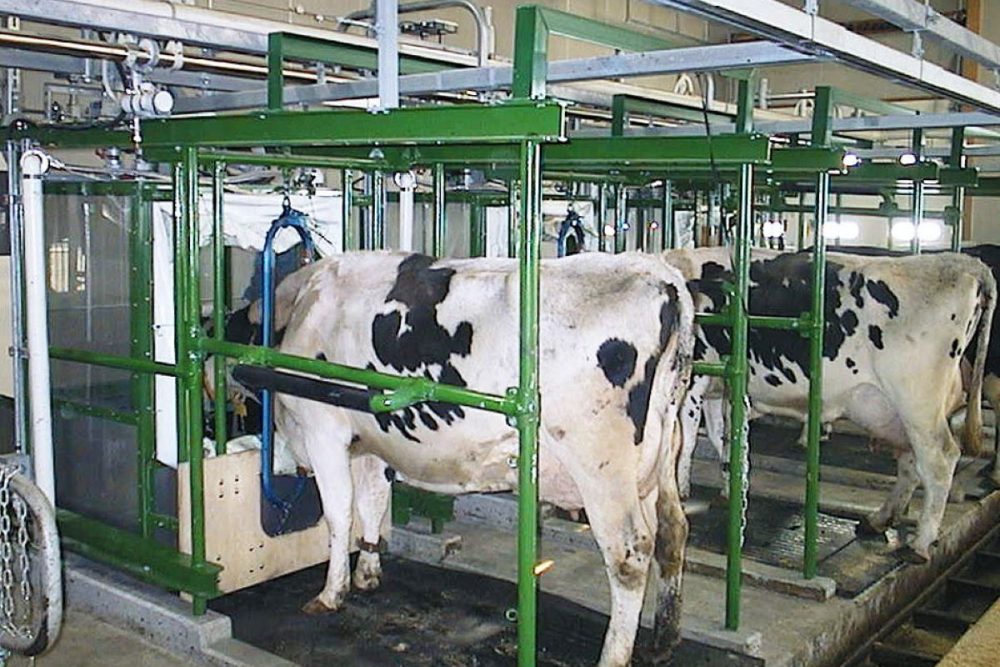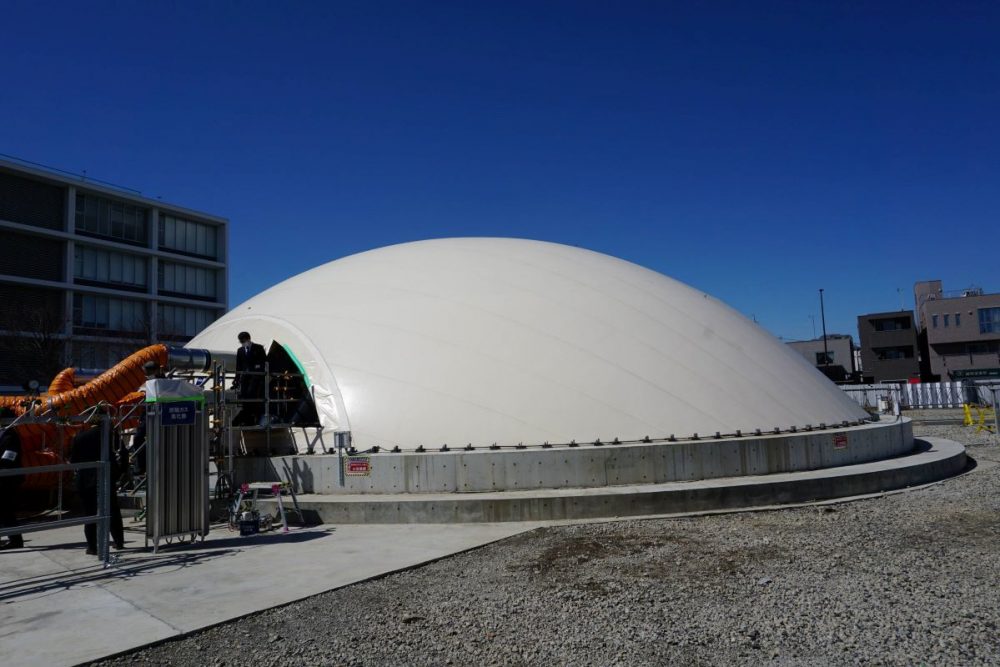Extreme Weather: How Supercomputers Prove the Effects of Global Warming
Using a supercomputer, Meteorological Research Institute researchers have quantified the role of global warming in heat waves and other extreme weather events.
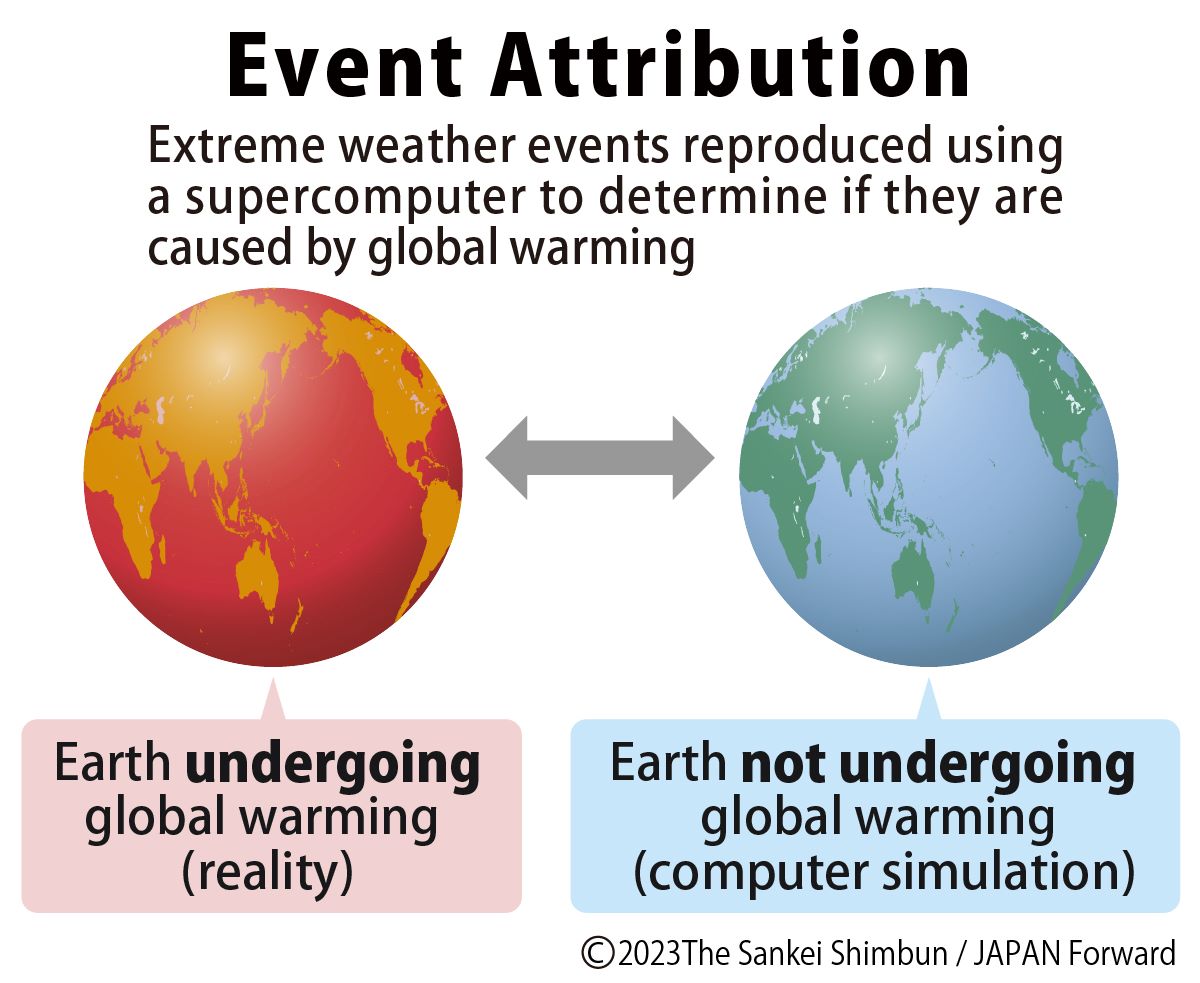
このページを 日本語 で読む
Extreme weather events are occurring more frequently throughout the globe. Research to determine whether global warming is the cause is gaining attention. This research, dubbed "event attribution," uses supercomputers to reveal causal relationships. Results can quantify the threats of global warming and are thus expected to raise awareness of climate change among the public.
Quantifying the Cause of Extreme Weather
Extreme weather such as heat waves, heavy rains, and droughts have become common occurrences worldwide in recent years. Likewise, Japan is hit by intense heat waves nearly every year. Although such abnormal weather events are more likely to occur due to the global warming trend, not all can be explained by global warming.
When heat waves occur, people often wonder if global warming is the cause. However, the answer to this question is hard to quantify. Yukiko Imada, senior researcher of climate dynamics at the Meteorological Research Institute, explains why.
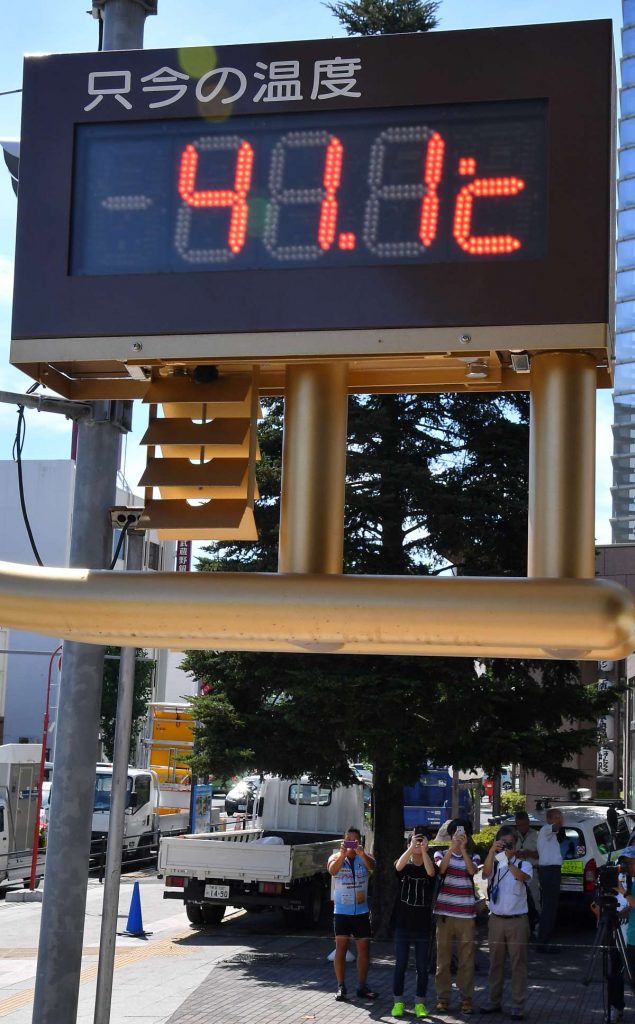
"The number one cause of extreme weather is chance fluctuations in the atmosphere. For example, Japan experiences heat waves due to a strong Pacific high-pressure system caused by the meandering of the jet stream. Until about 10 years ago, it was impossible to distinguish between the effects of natural fluctuations like these and the impacts of rising temperatures alongside global warming."
Following in the Footsteps of a Nobel Laureate
The solution to this problem is an innovative research method called event attribution. By this method, each abnormal weather occurrence, or event, can be attributed to various causes. This approach can be used to determine whether global warming is a factor in individual extreme weather events.
Since proposed in a 2011 research paper out of Oxford University, the method has become indispensable to the study of global warming. The United Nations Intergovernmental Panel on Climate Change (IPCC) used results of event attribution studies for the first time in its Sixth Assessment Report.

Analyses require a considerable level of computing power. Only recently with the improved performance of supercomputers, have these calculations become possible. Forming the basis for calculations is a climate modeling computer program developed by Dr Syukuro Manabe, who won the Nobel Prize in Physics in 2021. The program was one of the first to make predictions about global warming. The current research further evolved a method pioneered by Dr Manabe in the 1960s. Then it combined it with a cutting-edge supercomputer.
A Parallel World of 100 Earths
How does this research method work? First, using a high-precision climate model, the supercomputer creates the actual global climate, where global warming is occurring. Then, in order to capture various atmospheric flows that occur by chance, a massive number of simulations are repeated.
Based on this method, research teams such as those at the Meteorological Research Institute, create 100 different climate conditions using the "Earth Simulator" supercomputer of the Japan Agency for Marine-Earth Science and Technology (JAMSTEC).
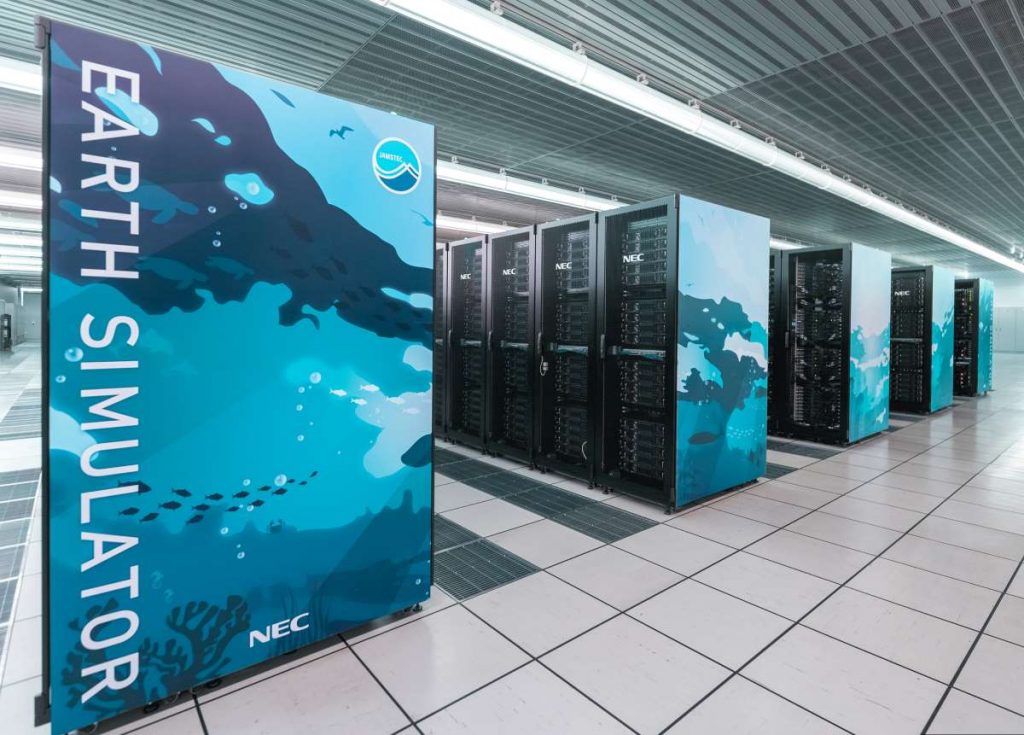
"We make 100 Earths, like parallel worlds," said Dr Imada. By counting how many of the Earths reproduce the abnormal weather pattern of interest, the researchers can calculate the probability of its occurrence.
Meanwhile, they remove the influence of human activities from the data given to the climate model and create another 100 parallel Earths without global warming. The probability of the abnormal weather event is then calculated in the same way.
Comparing these results with those of the real world makes it possible to determine the impacts of global warming.
For instance, Japan's record-breaking heat wave in July 2018 had a 19.9% chance of occurring on a warming planet. On the other hand, the probability of occurrence in the absence of global warming was 0.00003%, almost nil. This clearly showed that the heat wave would not have happened without global warming.
Strong Causal Relationship for Heat Waves
In addition, when the Meteorological Research Institute analyzed recent major abnormal weather events in Japan, the results were as follows (statistics are probability of occurrence).
Heat wave: July/August 2013
- With global warming: 12.4%
- Without global warming: 1.73 to 0.50%
Heat wave: August 2015
- With global warming: 2.8%
- Without global warming: 1.8 to 1.6%
Heavy rainfall in northern Kyushu: July 2018
- With global warming: 2.8%
- Without global warming: 1.9%
Heavy rainfall: July 2018
- With global warming: 4.8%
- Without global warming: 1.5%
Heat wave: June/July 2022
- With global warming: 19.8%
- Without global warming: 0.082%
Though the results vary, all events were significantly more likely to occur with global warming. For heat waves in particular, results make it almost certain that global warming impacted the weather.
On the other hand, rainfall depends on regional topography and air pressure, making differences in probability harder to detect.
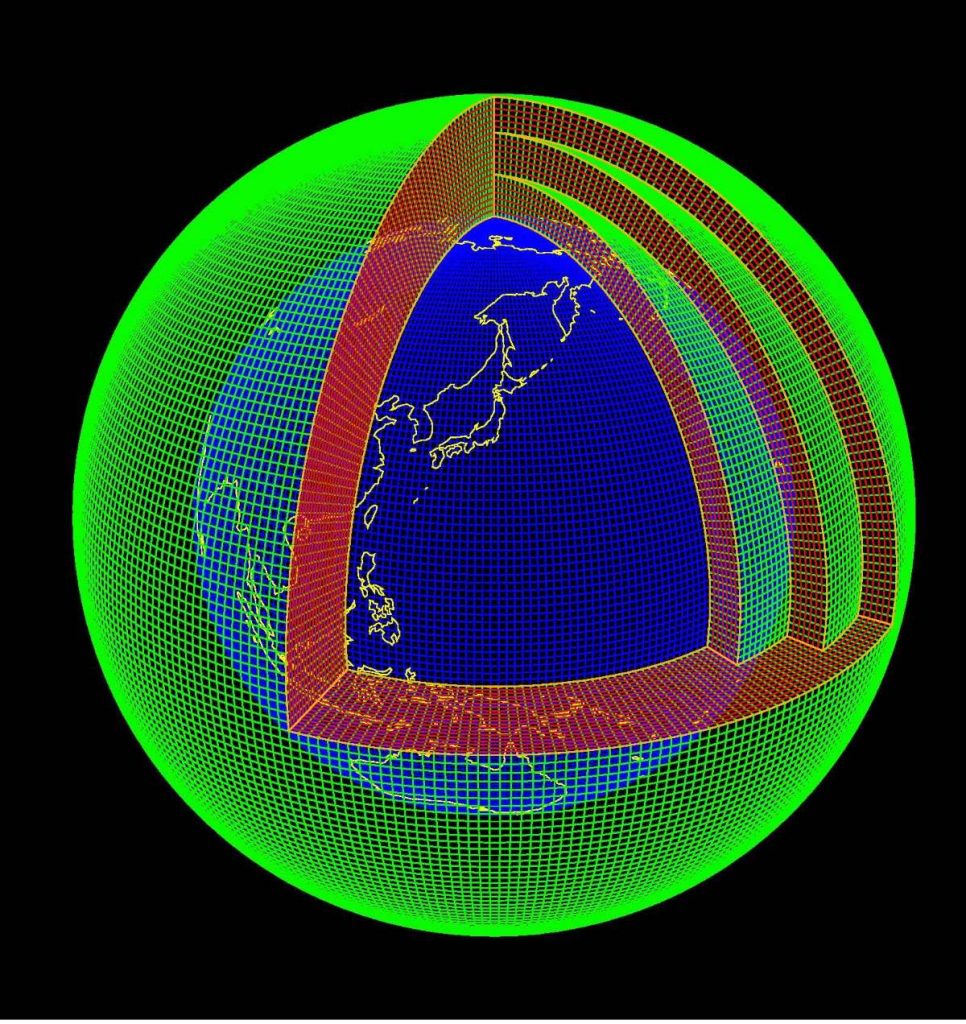
The research teams successfully calculated the impact of global warming on heavy rains in 2017 and 2018. To do this, they used a climate model based on a grid of the earth with roughly 60-kilometer sides. They also created a close-up version for Japan with roughly 20-kilometer grid lengths.
The relationship between typhoons and global warming is not yet well understood.
Getting the Message out Quickly
Dr Imada and her team now want to get quicker analyses of extreme weather events to the public. In doing so they hope to promote increased awareness of global warming. Due to massive numbers of simulations, in the past, it has taken the Meteorological Research Institute over two months to produce results. By this time, the season has changed and the public’s interest has waned.
For the 2022 heat wave, they used three-month forecast data of the Japan Meteorological Agency to perform calculations in advance.
They succeeded in producing results in about three weeks. However, the leading European research team publishes results on global extreme weather, including in Japan, on its website within a week.
"It is important to make the general public aware of the impacts of global warming. If analysis results can be communicated immediately following a weather event, they will seem more real. As we continue to improve our system, we will aim to perform the calculations in about a week so we can publish them quickly,” noted Dr Imada.
Efforts to apply results to fighting climate change are also important. In collaboration with the National Agriculture and Food Research Organization (NARO), Dr Imada and her colleagues estimated the cost of global damages to grain production due to global warming. They are also conducting joint research with Kyoto University to elucidate the risk of high tides and floods in Japan due to global warming.
The team also plans to evaluate the probability of occurrence of high temperatures at the local level, targeting areas where temperatures are likely to rise due to the Foehn effect. Ultimately, the aim is to connect results to increased public awareness and individual action.
このページを 日本語 で読む










